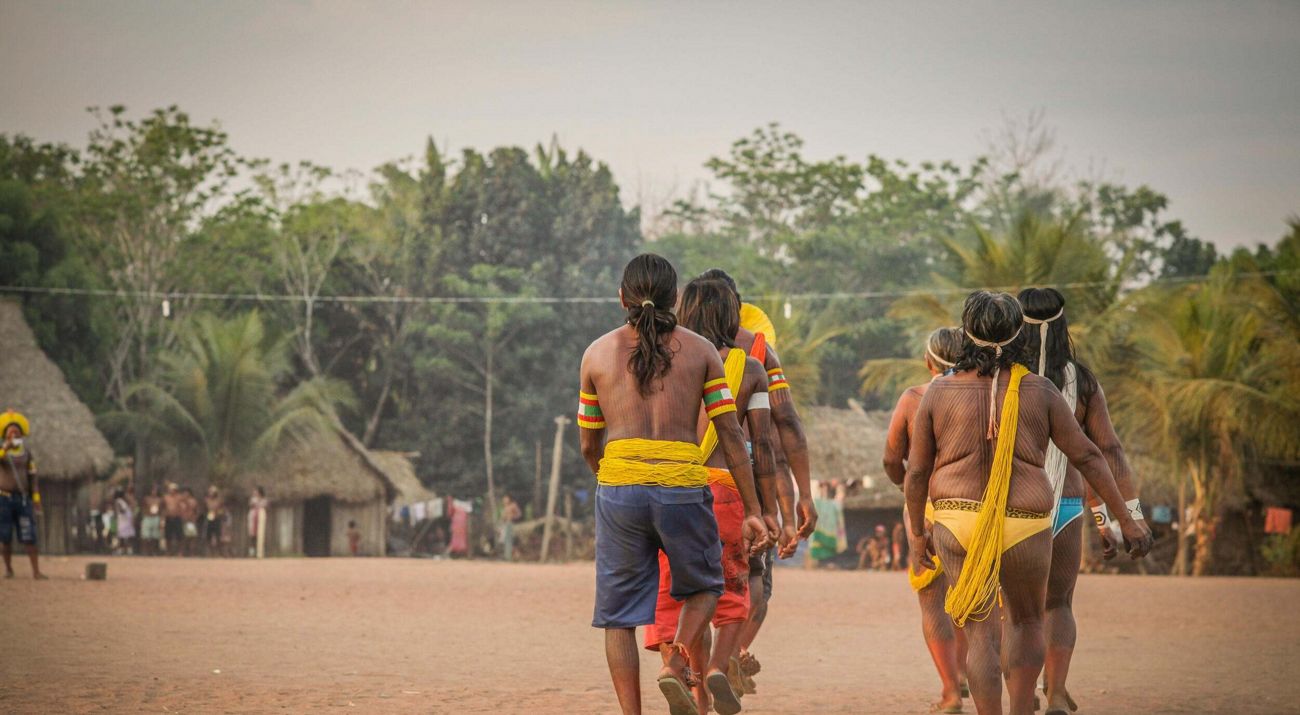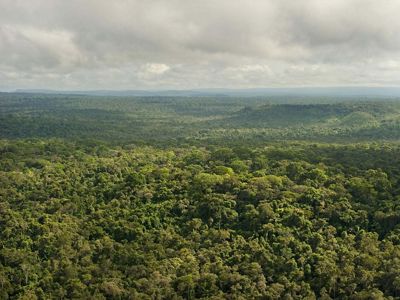What It Will Take to Achieve Equitable Economics for Indigenous and Local Community Nature Guardians
By Rony Brodsky, Dir IP- and LC-Led Finance at TNC, and Paula Caballero, Managing Director, TNC Latin America.

As global discourse increasingly centers the crucial role of Indigenous Peoples and local communities in the fight for biodiversity and against climate change, enduring elephants in the room are rights, human well-being, and inequality. Indigenous peoples protect an estimated 45% of the intact Amazon Forest, but they face a poverty rate more than two times that of the non-Indigenous population in Latin America. 39% of global lands in good ecological condition are governed by Indigenous Peoples, but they are increasingly under threat due to roll-backs in legal protections, encroachment, and political violence driving a surge in assassinations and persecution of Indigenous activists. Industrial development threatens nearly 60% of Indigenous Peoples’ lands in 64 countries. Indigenous Peoples manage 17% of all forest carbon and contribute to the conservation of 25% of the world’s carbon sinks, but they receive less than 1% of climate finance.
We are asking Indigenous Peoples and local communities (IPs and LCs) to save our planet and our humanity, while at the same time enforcing systems that do not provide for and often obstruct their basic needs, ways of life, and sovereignty. Governments worldwide drive more than $7 Trillion in direct and indirect subsidies to fossil fuels, agriculture, and fisheries -- 8% of global GDP and more than ten times the global biodiversity financing gap -- when agriculture subsidies alone are responsible for 14% of global deforestation. The International Indigenous Peoples Forum on Climate Change cites numerous examples of Just Transition-branded activities "being carried out on Indigenous Peoples’ lands and territories without their Free Prior and Informed Consent. This cannot be defined as a transition from ‘business as usual’ and these activities certainly cannot be called ‘just.’"
The global community has made some noteworthy commitments to Indigenous financing, like the Glasgow pledge for $1.7 billion to fund forest tenure rights of IPs and LCs and the new Global Biodiversity Framework Fund's aspirational goal of ensuring that at least 20% of its funding goes to conservation action by IPs and LCs. This is progress, but it does not substitute for the work that we need to do to change entrenched mindsets and systems of economic and legal incentives that, so long as they endure, will continue to result in the environmental and social unraveling that is now being seen from all corners of the world. We are excited to see some movement on this, the rumblings of systems change, but at the same time are alarmed where the rubber band is snapping back. The following are some of the most important – and often under-appreciated-- strategies for achieving equitable financial paradigms for nature guardianship:

- Inclusive investments in rights, sovereignty, and territorial management: Tenure rights-based investments have shown to be superlatively cost-effective climate investments. For example, projects priced at just US$3-11 per hectare lead to communities’ receiving land title and/or registration documents that protect rights and ability to manage lands for generations. The costs of securing Indigenous lands for 20 years are at most 1% of the derived benefits. This is an incredible return on investment in the climate arena, and a global chorus of Indigenous Peoples’ representative bodies has consistently advocated for investments in tenure rights.
Beyond titling, it is crucial to invest in the governance and leadership of Indigenous Peoples to define and carry out their economic and resource management priorities and plans. For example, under Brazil's Policy for Territorial and Environmental Management of Indigenous Lands (PNGATI), IPs conserve, defend, manage, use, govern, and determine financing for their lands to maintain their conservation value and promote collective community well-being. Such policies are important to creating the conditions for financial autonomy and resource transfer for localized territorial development approaches.
Despite all this, we have been seeing rollbacks across the globe, from delays in passing Indigenous rights protections in Indonesia to the Marco Temporal Law curbing Indigenous rights in Brazil. We need to stay vigilant regarding these rollbacks.
- Financial, economic, and trade policy reform: Global trade policy and regulation, public budget allocations, tax regimes, and international finance and aid have been making some strides towards reform. For example, agricultural production accounts for 80% of total global forest conversion, and if enough political will comes together to get it implemented, the EU deforestation-free import law could be a major step to revolutionizing global agriculture practices away from deforestation. The inclusion of a 2% annual minimum wealth tax on the world’s billionaires in the G20 communiqué is hailed by many as a moral achievement for Brazil and signals increasing global willingness to reckon with inequality and possibilities for redistribution, including towards climate adaptation. The most climate vulnerable countries have some of the highest levels of debt distress and spend much more servicing their debt than they receive in climate finance, but debt conversions offer to free up as much as US $100 billion to enable borrower nations to pursue climate and nature strategies. Alongside robust safeguards, Free, Prior, and Informed Consent, and co-construction of benefit sharing mechanisms, this could bring very significant financing for nature guardianship.
- Pro-poor and pro-nature social protection: Social protection programs are the set of public measures and systems to help poor and vulnerable people cope with crises and shocks, find jobs, invest in the health and education of their children, and protect the elderly. Social protection programs now reach 2.5 billion households, including 20 million households in Brazil alone. These programs have proven effective to boost real income by as much as 250%. In combination with complementary strategies like skills trainings, savings, and business advisory, the benefit-cost ratios are as high as 380%. For example, in Mexico, the government introduced Oportunidades, a cash transfer program reaching 5 million families living in poverty. The program was entirely financed by the elimination of food subsidies to the non-poor and generated a 1.1 economic multiplier for each dollar spent.
Evidence demonstrates that social protection and forestry policies are “complementary so that they be used together synergistically to achieve objectives of poverty reduction, ending hunger, and sustainable management of natural resources.” Instead of pitting the poor against the poor as forest dependent peoples compete and often migrate for diminishing resources to survive, the economic development and conservation sectors can work together to build coherence between social protection and forestry programs, and in turn can help communities to thrive in place. Even better, this can be financed by redirecting harmful or inefficient subsidies.
- Multilateral fund reform for direct access: Lastly, efforts underway to reduce institutional layering and directly channel money to Indigenous-led funds like Fundo Podáali, significant multilateral fund set-asides for IPs and LCs, and reform work to address barriers to multilateral and bilateral funding accessibility can help to drive some of the largest aggregations of resources towards communities. This is crucial because most financing to IPs and LCs is currently channeled through multilaterals and international NGOs, and little of it – just 17% -- actually reaches them. We are heartened to see a fast-rising tide of interest and discussion on this by donors and most of the major multilateral climate and biodiversity funds. We hope progress here can help to show that climate and biodiversity finance can be pro-people, and in turn increase political will. The Tropical Forest Finance Facility, led and championed by Brazil, holds this promise.
We believe that the global conservation and climate movements will not achieve their goals without driving a paradigm shift that roots out the common drivers of environmental destruction, poverty, and inequality. More than ever, our movements must be intersectional. As we enter into this season of global discourse and cooperation for climate, biodiversity, and planet, we must remember to be in reciprocity and to holistically care for each other, for the most vulnerable, and for Indigenous and local community nature guardians. This means heeding Indigenous Peoples’ calls for tenure rights, sovereignty, and direct financing at the most grassroots levels; and in many cases it also means coming together for economic changes at some of the highest policy levels, while grounded by community voices and experience. These different dimensions of our shared work are all essential, deeply interrelated, and a call to collaboration among people at every level.
This article has been published originally in Spanish at El País on Sept 25th, 2024.